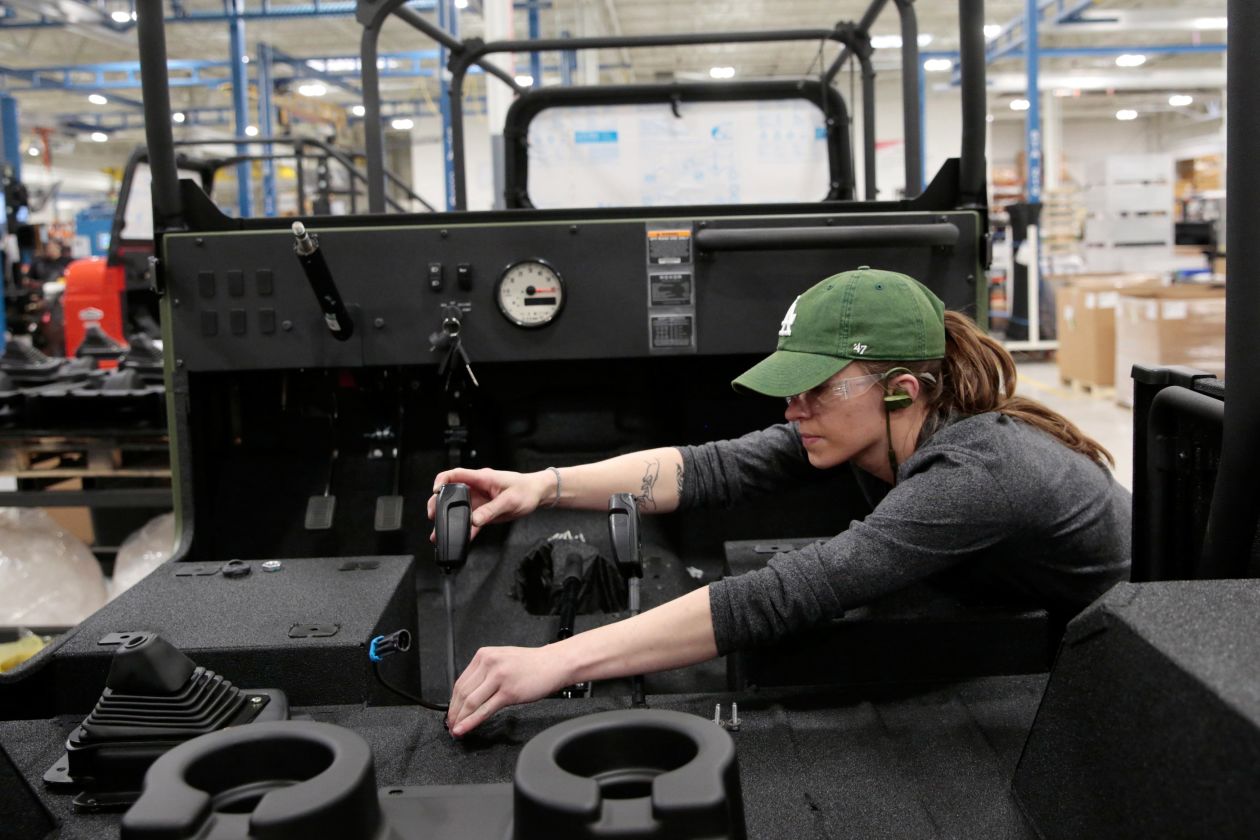By Harriet Torry, Wall Street Journal–
The U.S. economy grew at a slower rate than initially estimated in the fourth quarter, closing a year of strong economic growth on a softer note as a key measure of U.S. corporate profits weakened.
Gross domestic product, a broad measure of goods and services produced across the economy, rose at a 2.2% annual rate in the fourth quarter, adjusted for seasonality and inflation, the Commerce Department said Thursday. That was in line with economists’ expectations.
The agency had estimated earlier fourth-quarter growth at a 2.6% annual rate.
Spending by consumers, state and local governments and businesses was revised lower, while foreign trade exerted a slightly smaller drag on growth compared with last month’s estimate.
“The slowdown in GDP growth, from 3.4% in the third quarter, is a straightforward story about the end of the kick from tax cuts, which was never going to last long,” Ian Shepherdson, chief economist at Pantheon Macroeconomics, said in a note to clients, referring to the 2017 sweeping tax overhaul bill.
Thursday’s report also contained the government’s first broad estimate of profits at U.S. companies in the fourth quarter.
Corporate profits after tax, without inventory valuation and capital consumption adjustments, fell 1.7% from the prior quarter, snapping 2018’s growth streak and marking the first quarter-over-quarter decline in profits since the final quarter of 2017. Profits were up 11.1% in the fourth quarter from a year earlier, which was the largest year-over-year gain since the first quarter of 2017.
An alternative measure, after-tax profits with inventory valuation and capital consumption adjustments, were flat in the fourth quarter from the prior three months.
The broad trend suggested profits started 2018 strongly but eased as the year progressed.
Per-share profits rose 16.9% year-over-year in the fourth quarter for the biggest U.S. publicly traded companies, according to financial-data firm Refinitiv. That was the slowest growth rate of the year, but the fifth straight quarter of double-digit earnings growth for companies in the S&P 500. Meantime, revenues grew 5.1% over fourth-quarter 2017, the slowest pace since mid 2017.
The Commerce Department data showed consumer spending, which accounts for more than two-thirds of the economy, was weaker in the fourth quarter than initially estimated, largely due to downward revisions to spending on goods like recreation goods and vehicles.
Business investment was also revised lower from the initial estimate, due to a downward revision to spending on intellectual property products like software. Business investment still helped drive overall GDP growth in late 2018, contributing 0.73 percentage point to the quarter’s 2.2% growth rate.
The foreign-trade deficit subtracted 0.08 percentage points from growth, compared with an initial estimate of a 0.22 percentage point drag, due to a revision to imports. Private, nonfarm inventories boosted growth by 0.14 percentage point.
By one measure of the nation’s total output for 2018 compared with total output for 2017—which offers a look at broader trends—the economy grew 2.9% last year, unchanged from the prior reading.
By a separate measure, output in the fourth quarter of 2018 versus the fourth quarter of 2017—which gives a look at more recent trends—the economy grew 3.0% last year. That was slightly below the initial estimate of 3.1% growth.
Concerns about trade negotiations with China, a slowing global economy and the start of a partial government shutdown resulted in steep stock selloffs in the final months of 2018. Businesses have also faced rising labor costs.
Some industries sensitive to higher borrowing costs reported waning demand in the fourth quarter as the Federal Reserve continued to push short-term interest rates higher.
The housing sector was a headwind for growth for the fourth quarter in a row as residential investment fell at a 4.7% annual pace.
In the recreational vehicle industry, both manufacturer Winnebago Industries Inc. and dealership company Lazydays Holdings Inc. reported lower revenues in their most recent quarters.
Winnebago Chief Executive Michael Happe said in an earnings call earlier this week that the sector has come under pressure from higher product prices due to increased tariff and material costs, rising short-term interest rates in the second half of 2018 and financial-market volatility.
He also cited “uncertainty about 2018 tax returns for the middle class and a general sense of anxiety by end-customers as they try to determine where the economy is truly headed in the next year.”
Rick Collins, president of Elkhart, Ind.-based Cleer Vision Windows Inc., which makes windows for RVs, also said that demand weakened in the fourth quarter in its RV segment “and we’re still seeing some softness carrying through.”
As a whole, 2018 was extremely strong for the first three quarters but “the fourth quarter tempered the year as a whole,” he said.
Still, at the Lather and Fade Shop, a barber shop in Elkhart, which is a hub for the RV industry, manager Brooklynn LeDoux says business is going well and the store is profiting from its close location to RV factories.
“People are spending lots of money, they’re getting products and tips are flowing,” she said. The winter months are usually slower, according to Ms. LeDoux, but “right after the holidays things tend to pick up.”
The first quarter ends on Sunday, and the U.S. government is expected to release its initial estimate for first-quarter GDP on April 26. Forecasting firm Macroeconomic Advisers on Thursday projected a GDP growth rate of 1.4% in the first three months of 2019.
For 2019, many economists and businesses say they expect growth to moderate as the effects of the 2017 tax cuts wane, but say the economy remains supported by low unemployment and rising incomes.
The Federal Reserve predicts 2.1% growth from the fourth quarter of 2018 to the fourth quarter of 2019.
Write to Harriet Torry at harriet.torry@wsj.com


Leave A Comment
You must be logged in to post a comment.